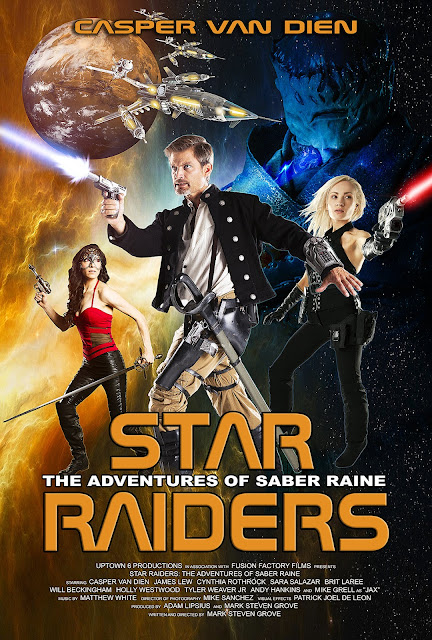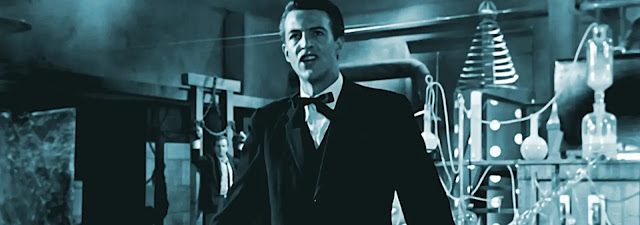PHENOMENALITY: *marvelous*
MYTHICITY: *good*
FRYEAN MYTHOS: *adventure*
CAMPBELLIAN FUNCTION: *sociological*
I hadn't looked at any of the MAD MAX films, or any critical reviews of same, for over 20 years. Then I first decided I ought to review them for this site and for THE GRAND SUPERHERO OPERA. I didn't exactly rush to do so, since my review of MAD MAX appeared in July of last year and I got around to THE ROAD WARRIOR last month. In those reviews I noted that I'd never been a big fan of the Mad One's debut movie and that ROAD WARRIOR wasn't nearly as riveting as I remembered.
Though the original trilogy is dystopian fiction, the first two are just barely science fiction, since writer-director George Miller is primarily focused on brain-busting action. I have an impression that for reviewers in 1985, the third and last film in the trilogy was viewed as underwhelming. But as I look at THUNDERDOME now, it seems like the only movie in the batch that works both as dystopian myth and science-fictional myth.
The other films alluded to the central character's uneasy relationship with his original job as a highway patrolman and how isolated he was from the ramshackle barbarian societies that arose after the Big Whatever brought about the demise of civilization. In a world governed by a dog-eat-dog ethic, what can a lone cop do except retreat from attachments and try to protect himself? Miller's Max-myth owes not a little bit to tropes of the Western gunfighter, who rides into some small town and initially shows no regard for the less adventurous townfolk. But Max, like those solitary gunmen, is always moved to protect ordinary life even if he cannot share in its pleasures.
So as THUNDERDOME commences Max (Mel Gibson) is once more on his own, trekking through the wilderness with his goods and a couple of camels. A father-and-son pair of ravagers, flying a crude two-seater plane, steal the hero's possessions, and afterward Max follows their trail to the nearest human outpost. The outpost's name, Bartertown, is emblematic of rabid consumerism; everyone is out for himself/herself, and the sort of barter practiced there is defined by the phrase *caveat emptor.* It's surely some sort of sociological comment that the power of Bartertown resides in their ability to refine methane from the feces of pigs.
Max learns that the bandits have already sold his goods on the open market, and since there's no law here, the hero can only seek to regain his goods with the barter of his fighting-skills in the service of the city's overt ruler Auntie Entity (Tina Turner). Auntie has a rival for rulership: the dwarf Master, who keeps company with a musclebound brute, Blaster. Auntie wants Max to defeat Blaster in mortal combat so that Master will lose his protector and Auntie can assume total hierarchy in Bartertown. And said mortal combat takes place in the arena called Thunderdome.
The fight in Thunderdome is justly famous, but in this movie it's a prelude to more subtle forms of conflict. Without getting into specifics, Max finds that there are a few decencies he won't discard for personal gain. This moral squeamishness gets him exiled from Bartertown, bound to a horse's back and sent into the desert. Auntie, for her part, gets what she wanted without having to pay her rebellious servant.
The deeper form of conflict appears when, by dumb luck, Max crosses the inhospitable stretch of desert called "the Nothing" and ends up in another settlement, built around an oasis.
While Bartertown is a place of instant gratification, of adults ripping off other adults, the oasis-refuge is a realm of childlike wonder, not least because it's inhabited only by kids and teenagers. All are the descendants of the survivors of a plane that crashed near the oasis decades ago. Theirs is a kingdom of youth, like that of the Lost Boys in PETER PAN, but unlike the Lost Boys these youths celebrate the vanished wonders of the fallen civilized world, which they call "Tomorrow-morrow land." The children believe that Max is Captain Walker, the pilot of the downed plane, who years ago left the oasis to look for help. Max denies being the cynosure of this bizarre "cargo cult," and when some of the kids adamantly insist on leaving to look for their fabled paradise, Max does his best to restrain them.
But Realist Max can't restrain these impossible dreamers, and a group of kids sneaks off into the desert. Max and a few allies pursue them, but they don't overtake the rebels until both groups are out of supplies. Max knows what kind of reception he can expect from Auntie Entity, so he and his Lost Boys infiltrate Bartertown to steal the supplies they need. By "coincidence" this gives Max the chance to avenge Auntie's mistreatment by liberating the captive Master and blowing up Auntie's pigshit-refinery. Max's group steals a car and flees. but Auntie's forces pursue, also in the usual barbarian art-cars. In the end, Max gives his Lost Boys (and Girls) the chance to find a version of Tomorrow-Land. The hero doesn't share in the new world, but like the gunfighter goes back to his ceaseless Cain-like wandering-- which would not be further explored until 2015's MAX MAX FURY ROAD.
If the subgenre of post-apocalypse fiction has a masterpiece in cinema, THUNDERDOME is it. Max had faced a conflict between savagery and civilization in ROAD WARRIOR, but this time there are two opposed civilizations: one devoted to greed and one to imagination. In addition to the generally expected excellence of the action scenes, there's a concomitant quality to the extravagance of the costumes (note the bizarre outfit of Auntie's henchmen Ironbar) and to the score, provided this time by Maurice Jarre. Most surprisingly, since most big-budget movies outside the musical genre don't produce outstanding songs, THUNDERDOME can boast, both sung by Turner but written by separate songwriters.
Since Max has a greater range of emotions this time, Mel Gibson gets to show off more acting chops, and Tina Turner, whose cinematic outings were few, consistently delivers both the ambition and wry humor of Auntie Entity. The only substantive criticism I can make is that none of the kids from the oasis emerge as interesting characters in their own right. And this is in spite of the fact that the script gives a couple of them very mythic names-- Finn McCoo, derived from an archaic Irish hero, and Savannah Nix, whose cognomen combines an image of fertility with the name Nyx, most probably referencing the Greek personification of Night. If any of them sustain mythicity, it would probably Savannah, since she is one of the older kids who keeps alive the myth of Tomorrow-morrow Land, and who departs the security of the oasis in pursuit of a dream that, while foolish on the surface, ends up enlisting Max in making sure that the aspiration becomes a reality.






















